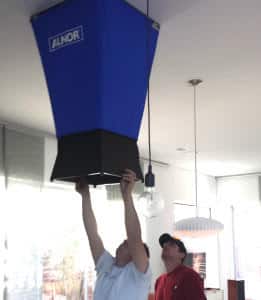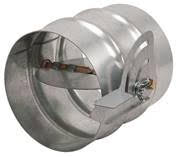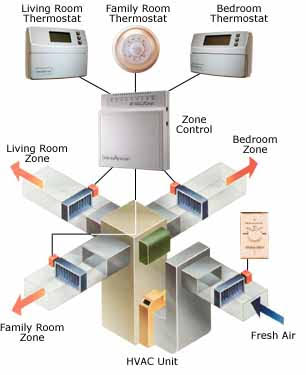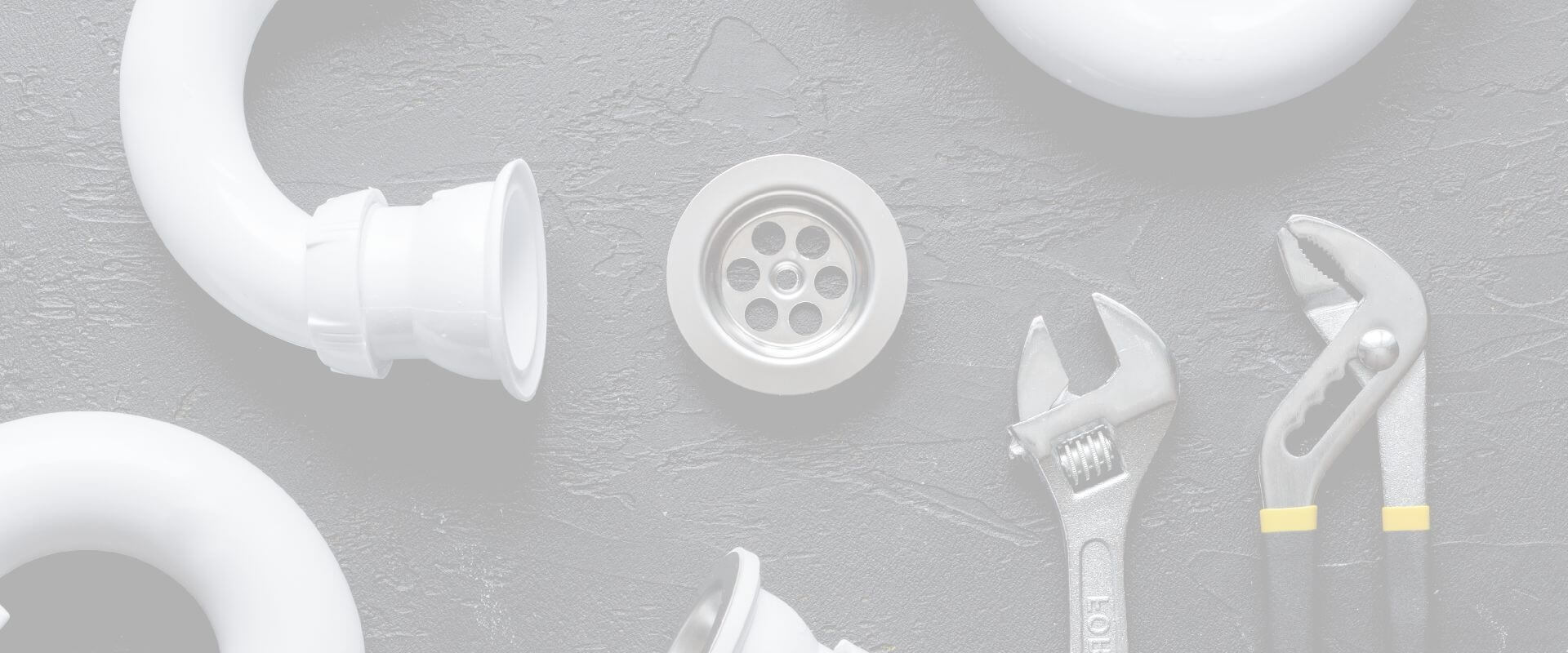Why Do I Have Hot And Cold Rooms In My House? How Can I Balance My Residential HVAC System?
 There are several possible solutions to increasing the efficiency of your HVAC system and making the air distribution system work the way it was intended. As with all problems the solution isn’t always black and white and different solutions may work for different people.
There are several possible solutions to increasing the efficiency of your HVAC system and making the air distribution system work the way it was intended. As with all problems the solution isn’t always black and white and different solutions may work for different people.
Unfortunately in Las Vegas the builder or their HVAC contractor does not look at the best way to run each home’s air distribution system independently. They will engineer a track home one time and will ignore things such as exposure location. One house may face east and the exact same one down the street may face North. The builder does not increase or decrease the ducting to accommodate for this kind of exposure, which ends up creating a greater (or lesser) heat load on a particular space.
Here are some possible solutions to your air balancing problems.
- Balancing airflow at the register mounted control damper. When we get a call from a customer telling us that they have some areas of their home that will be warmer than the rest of the house in the summer or colder than the rest of the house in the winter than we usually begin our diagnostics by checking the air distribution system. If the airflow temperature split is ok (18-24 degrees Temp split between the return air and the supply air) then we will begin looking at the ductwork and how it was run. Some things we can correct by simply relocating the problem ductwork to a new spot on the plenum box. If this isn’t an option we usually suggest that the customer try to balance the system their selves by using the register mounted dampers. There will be a little tab on all the registers on your home that can be adjusted to control the airflow at the register. You will never want to close a register off completely as it can ultimately begin affecting your equipment’s efficiency and if closed too much, the register can become noisy as air is pushed through a restricted area. This solution is not ideal, but it is inexpensive (free). The problem with this is there is no way to control where the air that you have blocked off will go. If it is part of a branch that feeds two or three rooms, those other rooms are likely to get some of the airflows, but how much will be determined by things outside of what we can control in most homes. This is usually only a workable solution for a room that is getting too much airflow but does not work well for any other problem.

- Installing balancing dampers at the outlet of each air supply drop. This, in our opinion, is the best solution, but unfortunately is not always practical. Here we would add manual control dampers to each supply air drop before it reaches the register. This system can control the exact amount of air to each room, thereby balancing your entire home exactly as it should be. This type of system is common in commercial applications, but almost never seen in residential homes. If you have a single-story home with access to the ductwork than this is a very good solution for you. This solution is not a good one for multiple story buildings that do not have access to the ductwork on the lower stories. In order to add dampers to the lower floor ductwork, you would have to open up sheetrock to install the dampers and then create access doors or extensions mounted to your ceiling to control the dampers after the sheetrock was replaced. Without access to ductwork, the costs can skyrocket and make this solution cost-prohibitive.
- Booster fans. We have installed a few of these under very limited circumstances. For instance, if we have a room that is not getting enough air and balancing dampers are not a viable option we can install a booster fan in the duct run supplying that room to force more air down the line. This solution is ok if you are just looking to add air to a particular room or rooms. Some possible issues with this is that you can’t control exactly how much air gets added. Different fans move different amounts of CFM but they are usually on/off and do not usually have multiple speeds. You will also need to provide the fan with its own electricity and then tie it in using a relay so that it is only running when the air handler or furnace blower motor is on.
- Zoning system and Zoning controls. This is a pretty good solution and can be paired with manual control dampers to be a perfect solution. It also happens to be the most expensive solution. Assuming we have access to all the duct runs, we would install manual dampers to each of the supply runs. Zoning dampers are installed to control airflow run time to particular rooms or groups of rooms. The extra thermostats that must be added to control the various zoning dampers are mounted in the area they serve and are tied into the zone control board. During a call for cooling or heating, the dampers will open or close depending on whether or not a particular zoned area is calling for comfort cooling. This system allows you to keep one part of the house at one temperature and another part of the house at a different temperature even though both areas are served by the same piece of equipment. This system requires balancing dampers, zone control dampers, a bypass damper set to maintain a certain static pressure, a zone control board, and low voltage wiring tying everything together.

We at Legacy Air hope this helps you out with your decision and please feel free to call on of our technicians if you need further advice on how or if you should proceed with one of these solutions to your heating and cooling needs.

